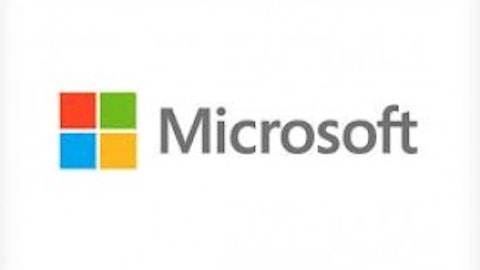Technology is changing how the food industry does business. From tabletop tablets to interactive mobile apps, restaurants are finding better ways to get customers to spend more. Brinker International, Inc. (NYSE:EAT)‘s Chili’s Grill & Bar is the latest casual-dining chain to capitalize on this trend. The company has been testing pay-at-the-table screens by Ziosk that let customers order food, play games, and pay the check without the need for a waiter.

Source: Ziosk.com.
Tabletop technology should boost sales for the company because guests at tables with these devices tend to spend more per bill, according to Chili’s senior vice president of brand strategy. In fact, dessert sales increased as much as 20% when the screens periodically showed photos of desserts. That’s an impressive figure, particularly if Chili’s is able to apply this strategy to alcoholic drinks and other higher-margin menu items.
There’s also an opportunity for restaurants to make additional money on the games the devices offer. Guests at Chili’s will be charged $0.99 to play a game. Chili’s gets to keep 50% of that gaming profit, with the other half going to device maker Ziosk. That seems fair considering Chili’s only rents the tablets and their technology from Ziosk. The devices are already being used in more than 150 Chili’s locations across the Midwest and in Virginia and Maryland.
Chili’s is expected to roll out the tabletop screens as early as next year at most of its remaining 1,266 restaurants, according to The Wall Street Journal.
Still, Chili’s isn’t the only casual restaurant chain using technology to drive sales. Applebee’s, which is operated by DineEquity Inc (NYSE:DIN), is also testing tabletop tablets from Ziosk, along with others from Presto and eTab. Such on-table screens also allow restaurants to collect data about their customers, such as survey answers and email addresses.
Ziosk’s devices, for example, include a real-time review tool called zSurvey. A chain like Applebee’s could then use real-time feedback collected by the device to improve the customer experience at its restaurants. Moreover, Ziosk reports that “over 7% of guests opt-in to zSurvey without incentive where traditional printed receipt methods yield less than 1%.”
Technology at the table
While this technology isn’t new, it’s become more commonplace in the restaurant industry today. In fact, more people are embracing the idea of technology at the table than ever before. The National Restaurant Association reports that 44% of adults say they would use a self-service device to order if it were offered at a quick-service restaurant. Yet technology’s role in the restaurant industry isn’t limited to third-party devices.
Other companies are using mobile apps to compel customers to spend more. Mobile payments now account for 10% of in-store purchases at Starbucks Corporation (NASDAQ:SBUX) locations in the United States. Starbucks Corporation (NASDAQ:SBUX) customers have the option of paying with their smartphone using the Starbucks Corporation (NASDAQ:SBUX) app or Square Wallet app. The coffee house chain invested $25 million in the payments processor last year and has since deployed Square’s technology at thousands of Starbucks Corporation (NASDAQ:SBUX) locations.
These moves are paying off. In addition to driving more traffic to Starbucks Corporation (NASDAQ:SBUX) mobile and desktop sites, the Starbucks card app also drives repeat visits In fact, the mobile version of the Starbucks card now generates more than 3 million transactions per week. Today, the java giant’s success is prompting other restaurant chains to create mobile payment apps.
McDonald’s Corporation (NYSE:MCD) jumped on the technology bandwagon earlier this month when it began testing a mobile payment app in select cities including Salt Lake City and Austin, Texas. The fast-food chain’s new app lets customers place orders and pay on their smartphones for pickup in stores, curbside or at drive-thru windows, according to Bloomberg. Furthermore, similar to Starbucks Corporation (NASDAQ:SBUX), McDonald’s Corporation (NYSE:MCD) new mobile platform also includes a loyalty program to encourage repeat visits.
Meanwhile, in Asia, the world’s largest burger joint is serving up tableside technology with its Happy Table. Using near field communication, tables inside a McDonald’s Corporation (NYSE:MCD) restaurant in Yishun, Singapore, are transformed into “McDonald’s Land” when you hold an NFC-enabled smartphone over them. This is a big draw for families with young kids. And since the technology is pretty simple to install, we could see McDonald’s Corporation (NYSE:MCD) roll out this technology in more locations around the globe.
The reasoning here is simple. For casual-dining restaurants such as Chili’s and Applebee’s, offering tableside tablets puts them in control of the customer experience. It also gives them a platform to upsell guests on desserts or cocktails that they might otherwise forgo. Mobile offerings, on the other hand, provide added convenience for the customer, while helping the company grow its loyalty base. Importantly, all of these options enable restaurants to collect data and information about their customers. Technology moves the businesses forward.
The article How Restaurants Are Using Technology to Drive Business originally appeared on Fool.com and is written by Tamara Rutter.
Fool contributor Tamara Rutter owns shares of Starbucks. The Motley Fool recommends McDonald’s and Starbucks. The Motley Fool owns shares of McDonald’s and Starbucks.
Copyright © 1995 – 2013 The Motley Fool, LLC. All rights reserved. The Motley Fool has a disclosure policy.





